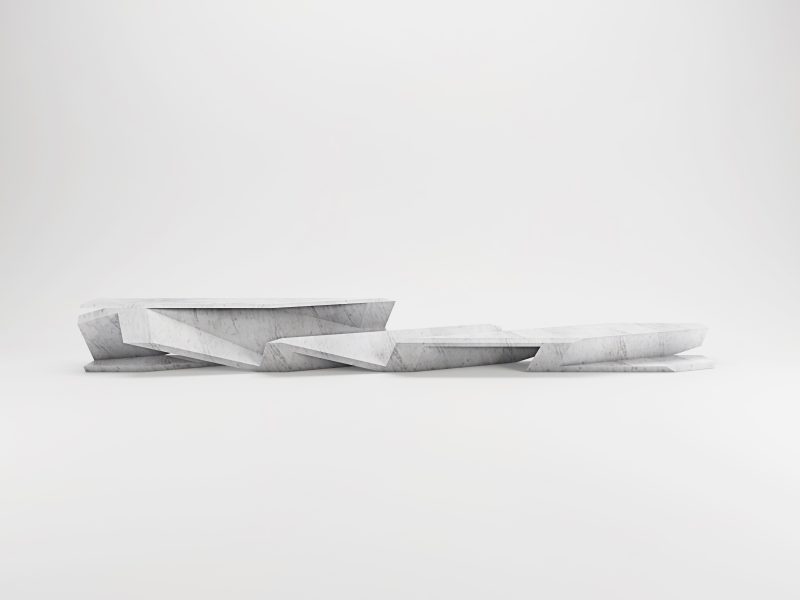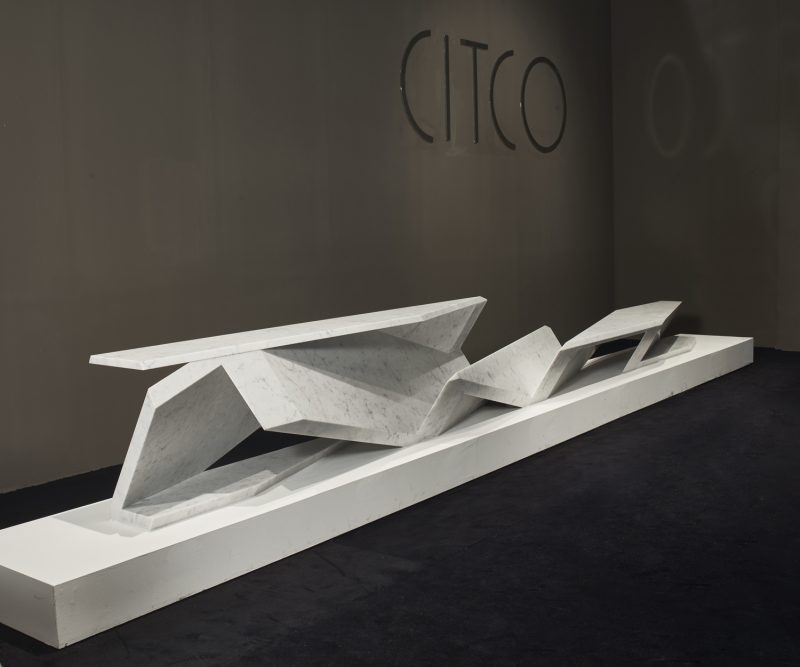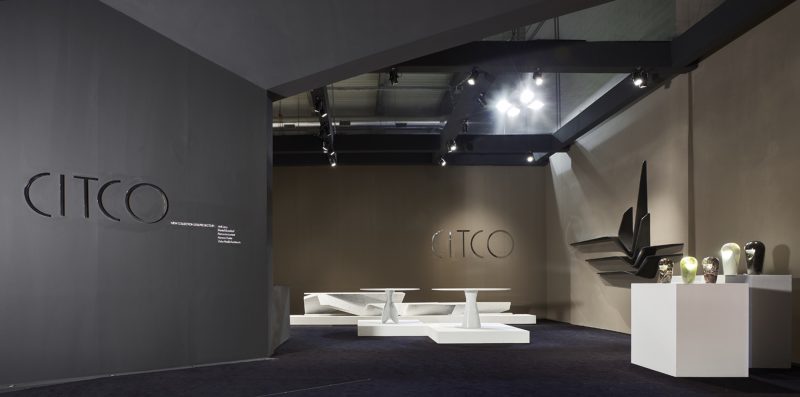During past Design Week in Milan the Italian brand CITCO presented series of new products in collaboration with famous designers and architects. One of the most interesting creations of this collection was The Enigma shelf by famous architect Daniel Libeskind.

It is a long and geometric table that incorporates a shelving system. The Enigma table is created from a block of white marble using precision-cutting technologies.
“The Enigma shelf for Italian stone company CITCO illustrates Libeskind’s deft control of bold, complex geometric forms and builds upon his unique exploration of sculptural furniture designs for the home and office.”
Last week I spoke to Giuseppe Blengini, the head of Libeskind Design in Milan.

Ksenia: Could you tell my readers a few words about yourself – what is your background and what do you do at Studio Libeskind?
Giuseppe Blengini: I am the technical director of Studio Libeskind, I joined the office in 2005 and soon became responsible for design division of the studio Libeskind Design.
Ksenia: Could you share how the collaboration between Daniel and CITCO came to life and why he found this project interesting? He is more known for architecture, so why CITCO and interior design?
Giuseppe Blengini: Five years ago we decided to open Libeskind Design in Milan because Italy– and especially in north of Italy– you can find the most fantastic design companies of the world. Milan is the perfect place to center the interior design and product design division since it is impossible to find this concentration of craftsmanship in any another place in the world.
We decided to start this department because for an architectural studio, it is also important to contribute not just to the design of the building, but the design of the insides of the buildings, including things, which affect people’s everyday activities.
If you create architecture, you have to think about everything: living rooms, bathrooms, halls, corridors, walls, etc. and try to investigate the world of design in order to create a revolution in architecture.
We have admired CITCO for many years. They are leaders and visionaries in interior design and it made sense for us to collaborate. This is why we are working with many companies, including CITCO.

Ksenia: For an architect, does it matter what people see, when they look at the building out of other buildings? Or also about what the room feels inside? Should it be work of an interior designer? I am not speaking about museum buildings, or libraries, where architecture is pre-dominant, but rather about buildings, where people live or work.
Giuseppe Blengini: I’m going to explain this in a slightly different way. We are a studio, which approaches design holistically whether it is a home, a school, a library, or a chair. So it’s not just architecture and the façade—it is everything. This does require an intellectual approach. Designer and architect must think together – why you are changing the horizon, why we are designing what we’re designing. And the same applies to furniture – it doesn’t matter – it changes the perception of the interior for people around you. And you have to think why you are forcing this change in interior and what kind of a thought you’re bringing to people.
Ksenia: How does Daniel make an ordinary person walking around his buildings appreciate the aesthetics? I was born in Russia, where architects and designers are driven by bad taste of client, how can one turn this around?
Giuseppe Blengini: We are not the kind of architects, that blatantly enforce our vision to our clients. When we are involved in a project and when we are talking about it, we’re taking care of everything.
From the first sketch of design to the involvement at the construction site. Thus the last voice is the voice of Daniel. The slightest details of the buildings belong to him. So think about our work, as if it is a ping pong game, in which on one side is Daniel Libeskind, on another side is client. There’s always a game in place, where opinions are exchanged and this is what our design procedure is.
Ksenia: Daniel’s buildings are normally very different from the surroundings, and they often dominate the landscape. Is this the case with CITCO? Should it be entertaining and draw attention?
Giuseppe Blengini: First of all, let me explain why we are working with CITCO. We worked with them on a few different projects. They are incredibly sharp about how advanced their technology is, and how good they are in what they’re doing. So we decided to work with them because for us as the creatives, it is virtually impossible to go this deep into technology and really get into what it takes to implement amazing design pieces.

Ksenia: Is design art?
Giuseppe Blengini: Of course, design is art!
Photo provided by CITCO and Studio Libeskind press services.